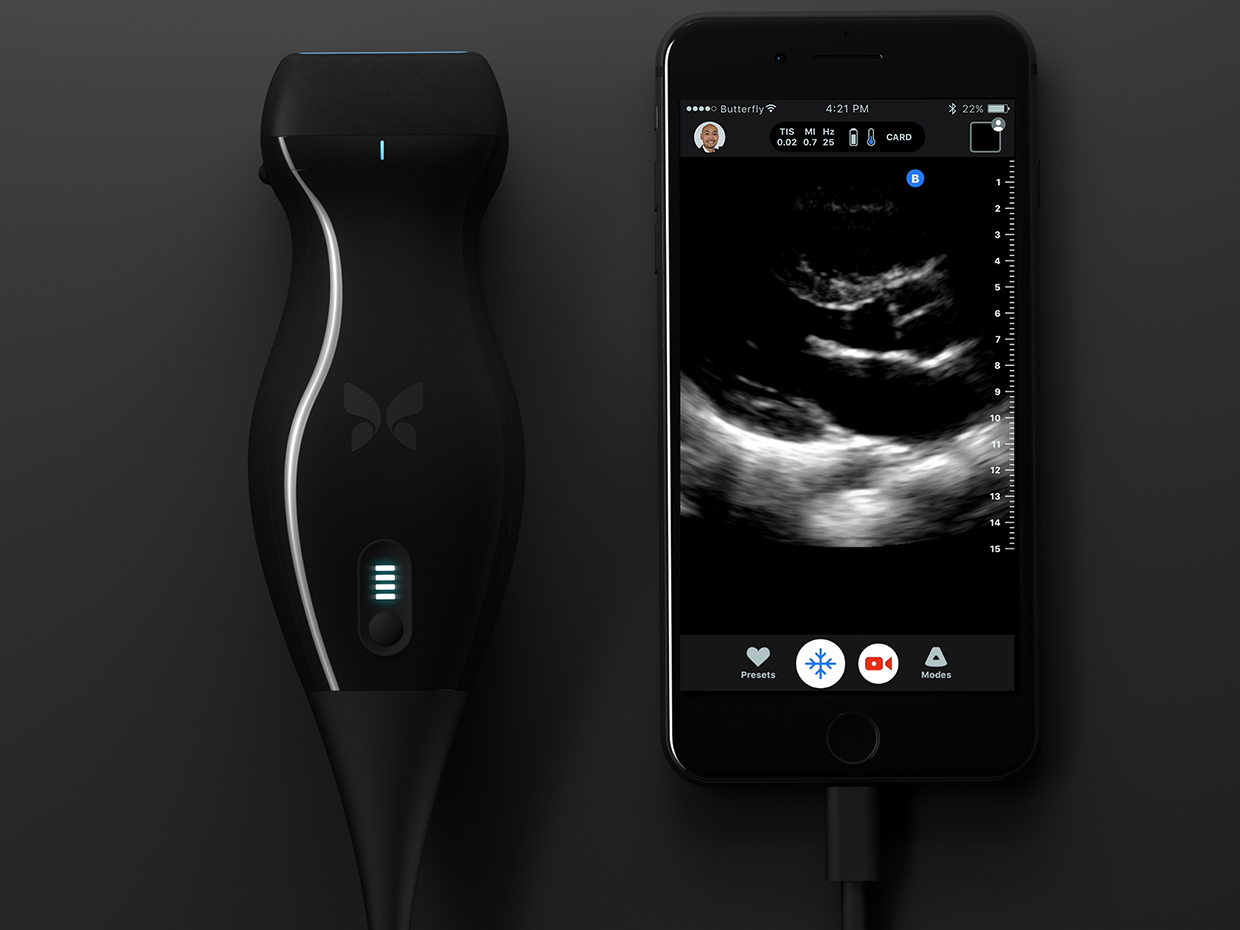Medical device and MedTech insights, news, tips and more
New “Ultrasound on a Chip” Tool Could Revolutionize Medical Imaging
October 30, 2017

Jonathan Rothberg, a entrepreneur who prides himself on drastically disrupting the biomedical industry every so often, has typically big claims for his new product. The Butterfly iQ, a cheap handheld ultrasound tool with AI smarts tucked inside, will 1) revolutionize medical imaging in hospitals and clinics, 2) change the game in global health, and 3) eventually become a consumer product that will be as ubiquitous as the household thermometer, he says.
Today, Rothberg’s startup Butterfly Network unveiled the tool and announced its FDA clearance for 13 clinical applications, including cardiac scans, fetal and obstetric exams, and musculoskeletal checks. Rather than using a dedicated piece of hardware for the controls and image display, the iQ works with the user’s iPhone. The company says it will start shipping units in 2018 at an initial price of about $2,000.
 But that’s just the beginning, Rothberg tells IEEE Spectrum. He expects to bring the price down on the handheld gadget, and is already looking ahead to radically new products. “In the next two years we’ll release a patch that uses ultrasound to monitor patients, and a pill you can swallow to look at cancer from within the body,” he says.
But that’s just the beginning, Rothberg tells IEEE Spectrum. He expects to bring the price down on the handheld gadget, and is already looking ahead to radically new products. “In the next two years we’ll release a patch that uses ultrasound to monitor patients, and a pill you can swallow to look at cancer from within the body,” he says.
All these form factors are possible because Butterfly uses a very different technology than conventional ultrasound. Its “ultrasound on a chip” takes advantage of the mass-market fabrication techniques perfected for computer chips, Rothberg says. “We put all the elements onto a semiconductor wafer, then we can dice up the wafer to make 48 ultra low-cost ultrasound machines,” he says.
Today’s ultrasound systems use piezoelectric crystals, which convert electrical energy into vibrations in the form of ultrasonic waves. A typical system has a display screen on a bulky cart with several wands for imaging at different depths within the body. These machines can cost upwards of $100,000. While a few smaller and more cheaper devices exist, such as GE’s handheld Vscan products, they still use pricey piezoelectric technology and require multiple probes, bringing the price to something between $8,000 and $20,000.
Developing the iQ’s chip-based technology was a two-step process. First, Butterfly’s engineers replaced the piezoelectrics with a micromachine that acts like a tiny drum to generate vibrations. Inside this “capacitive micromachined ultrasound transducer” (CMUT), an applied voltage moves a membrane to send ultrasonic waves into the body. The waves that bounce back from various body tissues move the membrane and are registered as an electric signal, which creates the image. Butterfly based its technology on research done by Stanford professor Pierre Khuri-Yakub, who serves on Butterfly’s scientific advisory board.
Read More at the Source: New “Ultrasound on a Chip” Tool Could Revolutionize Medical Imaging – IEEE Spectrum
By
